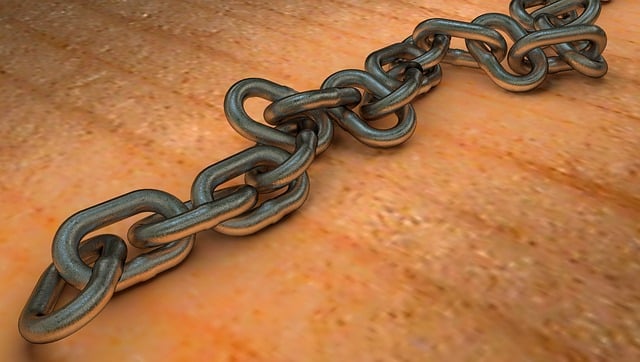Internal links are essential for website success, guiding users to relevant content, boosting engagement, and improving SEO. Key pages with high traffic and engagement should be strategically linked to support content. Effective anchor text, prioritizing user experience and relevance, enhances signal to search engines. Contextual links throughout the site foster deeper engagement and communicate page hierarchy, simplifying navigation. CTRs measure success, guiding optimization through user intent-aligned anchor text. Maintaining a natural, relevant link profile signals search engine quality, reducing bounce rates, and increasing session durations—all vital for SEO.
Internal links are a powerful tool for enhancing user experience and boosting SEO. This article provides practical internal link suggestions, guiding you through understanding their role, identifying key pages, crafting compelling text, and strategically placing them for maximum impact. We’ll also explore best practices for measuring success and maintaining a healthy internal link profile to elevate your website’s performance.
- Understanding Internal Links: Their Role and Benefits
- Identifying Key Pages for Internal Linking
- Crafting Effective Internal Link Text
- Strategic Placement of Internal Links
- Measuring Success: Tracking Click-Through Rates
- Best Practices for Maintaining a Healthy Internal Link Profile
Understanding Internal Links: Their Role and Benefits

Internal links are a fundamental component of any website’s architecture, serving as navigational aids that connect relevant pages within a site. They play a pivotal role in enhancing user experience and search engine optimization (SEO). By strategically placing internal links, websites can guide users to find related content effortlessly, fostering engagement and reducing bounce rates. This approach also allows search engines to crawl and index the site more efficiently, which is crucial for improving overall discoverability.
Effective internal linking strategies provide numerous benefits. It helps distribute link equity across a website, signaling to search engines that specific pages are important and worthy of higher rankings. Moreover, it enables content creators to interlink related posts or resources, promoting a sense of community within the site and encouraging users to explore more content. With the right internal link suggestions optimization and strategy in place, websites can achieve better SEO performance, improve user retention, and create a seamless digital journey for their audience.
Identifying Key Pages for Internal Linking

When strategizing your website’s internal linking, identifying key pages is a crucial first step. These are typically the most important or popular pages on your site that have high traffic and search engine rankings. They serve as the cornerstone of your internal link structure, guiding users and search engines alike to other relevant content. By analyzing page performance data from tools like Google Analytics, you can pinpoint these key pages based on their popularity and user engagement metrics.
Consider the types of content that attract the most visitors, time spent on each page, bounce rates, and conversion goals. Pages with consistently strong performance across these metrics are likely candidates for your internal linking strategy. Using these insights, you can create a hierarchical structure where key pages link to supporting content, enhancing user experience and SEO optimization (internal link suggestions tips). This strategic placement not only aids in spreading link equity but also ensures that valuable content is easily discoverable, contributing to better search engine rankings (internal link suggestions SEO).
Crafting Effective Internal Link Text

When crafting internal link text, the key is to make it both descriptive and enticing. Use clear language that accurately describes the target page while incorporating relevant keywords naturally. Instead of generic phrases like “click here,” aim for something more specific, such as “learn more about our sustainable practices” or “explore our latest product line.” This not only aids users in understanding where they’re being directed but also boosts SEO by providing valuable context to search engines.
Follow internal link suggestions tips that prioritize user experience and SEO optimization. Ensure the anchor text reflects the content of the linked page to maintain a seamless navigation flow. Avoid over-optimization by not using the same internal link suggestion phrases across multiple links on a single page. Remember, the goal is to create a harmonious and informative linking structure that enhances both user engagement and search engine visibility.
Strategic Placement of Internal Links

The strategic placement of internal links is a key aspect of effective website navigation and can significantly impact search engine optimization (SEO). When crafting internal link suggestions, consider the user experience as the primary goal. Links should guide visitors naturally through relevant content, enhancing their journey on your site. For instance, placing an internal link to a comprehensive resource within a related blog post can provide added value to readers while allowing them to explore more in-depth information. This strategic approach not only assists users but also signals to search engines the hierarchical and thematic connections between pages.
Internal link suggestions should be contextually relevant, ensuring they align with the surrounding content’s focus. For an SEO tutorial, including links to related topics like “best practices for internal linking” or “optimizing anchor text” within the main article can improve readability and engagement. This optimization technique not only facilitates easier navigation but also encourages users to delve deeper into your website’s valuable resources. By following these internal link suggestions, you create a well-structured web architecture that both enhances user satisfaction and boosts your site’s visibility in search engine results.
Measuring Success: Tracking Click-Through Rates

Measuring success is a crucial step in understanding the impact and effectiveness of your internal linking strategy. One of the most direct ways to assess this is by tracking click-through rates (CTRs). CTRs provide valuable insights into how users interact with your content, indicating which links are resonating with them and driving engagement.
By analyzing CTRs, you can identify high-performing internal link suggestions within your content. These tips and tricks from an internal link suggestions tutorial or optimization guide can help you create a more user-friendly and SEO-optimized site structure. For instance, strategically placing relevant internal links in anchor text that aligns with user search intent can significantly improve CTRs, making it a valuable metric to optimize your internal linking for better overall performance.
Best Practices for Maintaining a Healthy Internal Link Profile

Maintaining a healthy internal link profile is key to optimizing your website’s SEO performance. One of the best practices involves ensuring that your internal links are contextually relevant and lead users to valuable content. Each internal link should serve a purpose, whether it’s guiding visitors towards related resources, facilitating navigation, or showcasing important pages. This contextual relevance signals search engines about the relevance and quality of your content.
Additionally, following internal link suggestions tips like maintaining a natural linking pattern, using anchor text that accurately reflects linked content, and avoiding excessive linking can significantly enhance optimization. A balanced internal link structure encourages users to explore more pages, reducing bounce rates and increasing session durations—all factors that contribute positively to SEO. Regularly reviewing and updating your internal links based on these principles will ensure your site remains a valuable resource for both search engines and visitors alike.
